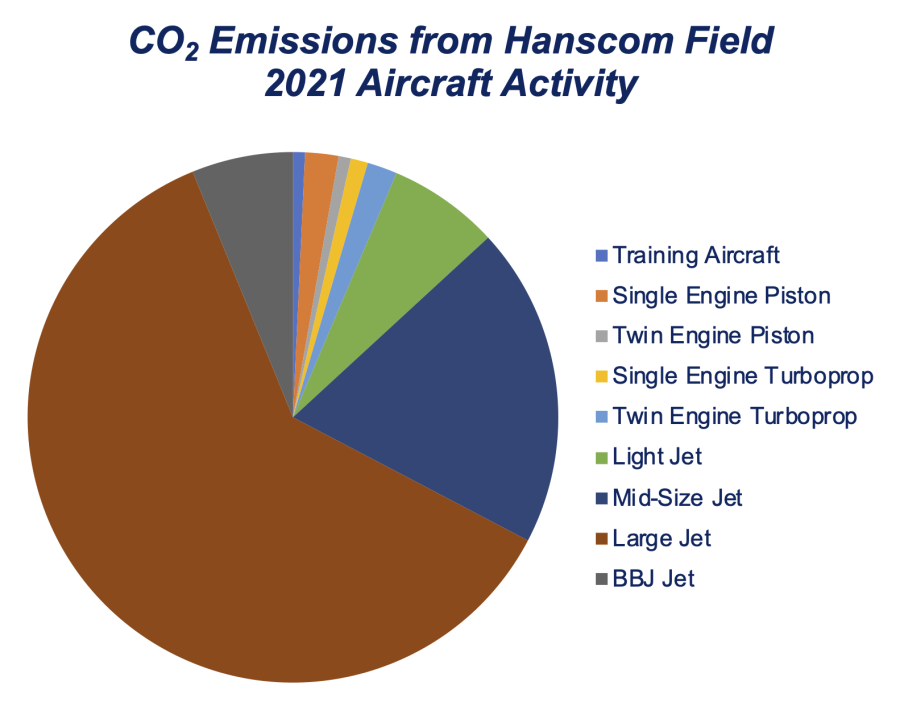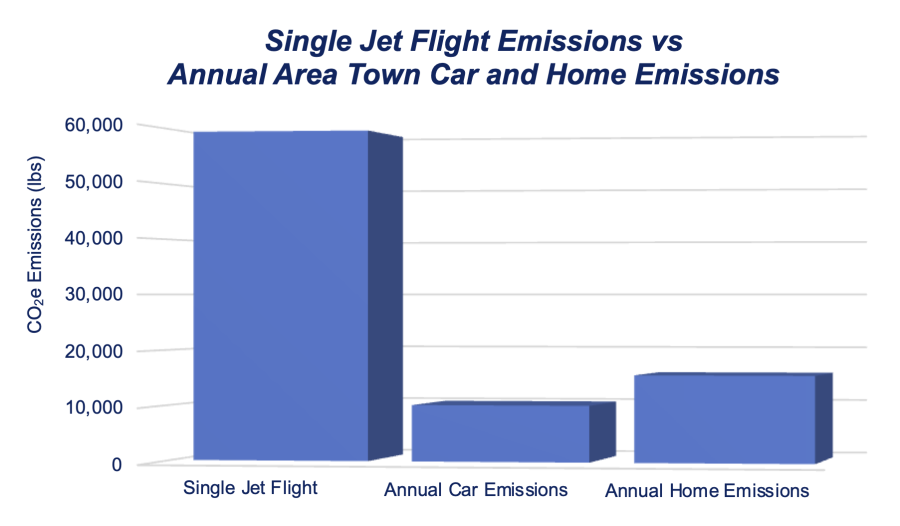Hanscom Field Expansion
PUBLISHED 6.23.23
Q: Can you provide an update on the Hanscom Field expansion project?
A: MassPort has notified Bedford, Concord, Lexington, and Lincoln that they are looking for community feedback on a proposal to build 495,470 square feet of new jet aircraft hangar space on 50 acres of land on the North side of the field. This is in addition to another 60,000 square foot jet aircraft hangar construction project that is already underway. Hanscom is already one of the busiest general aviation airports in the country with about 125,000 flight operations a year.
 The two projects combined would more than double the number of jet aircraft parked at Hanscom, based on MassPort’s most recently published Environmental Status and Planning Report.
The two projects combined would more than double the number of jet aircraft parked at Hanscom, based on MassPort’s most recently published Environmental Status and Planning Report.
Q: What impacts would we expect from this expansion project?
 A: MassPort states in their Hanscom annual noise report that jet aircraft operations are the primary cause of noise disturbances. Doubling the number of jet aircraft will almost certainly double the noise impact for neighbors living in Lexington, Bedford, Concord, and Lincoln.
A: MassPort states in their Hanscom annual noise report that jet aircraft operations are the primary cause of noise disturbances. Doubling the number of jet aircraft will almost certainly double the noise impact for neighbors living in Lexington, Bedford, Concord, and Lincoln.
Jets are also the primary cause of air pollution and greenhouse gas emissions, responsible for over 93% of all greenhouse gas emissions from Hanscom’s aircraft operations. Doubling the number of jet aircraft essentially doubles the emissions for the entire airfield.
A small training aircraft burns about 8 gallons of gasoline per flight, while the average jet aircraft burns 115 times more fuel per flight. And those jet aircraft emissions occur at an altitude where their impact is 2 to 3 times higher than burning that same amount of fuel in our cars or homes.
One average jet flight from Hanscom generates the equivalent of the annual emissions from 4 average Massachusetts homes or the annual emissions from 6 average passenger vehicles. Just one 2-hour jet flight generates more emissions than an average home does in 4 years or an average car produces in 6 years.
 The overall impact of the Hanscom expansion project is the equivalent of doubling the total number homes and vehicles in Bedford, Concord, Lexington and Lincoln, or adding 26,000 homes and 48,000 cars to the towns surrounding Hanscom. Let that sink in for a moment. This one project could wipe out all the excellent climate work of four entire neighboring towns.
The overall impact of the Hanscom expansion project is the equivalent of doubling the total number homes and vehicles in Bedford, Concord, Lexington and Lincoln, or adding 26,000 homes and 48,000 cars to the towns surrounding Hanscom. Let that sink in for a moment. This one project could wipe out all the excellent climate work of four entire neighboring towns.
Q: Are there any sustainable or emissions free options for aviation?
A: Some folks hold out hope that jet aircraft can transition to what they call Sustainable Aviation Fuel or SAF. The basic idea is to convert corn into ethanol, then convert that ethanol into a fuel that is chemically identical and indistinguishable from Jet A. The goal is to be able to continue using all of our existing aircraft without any changes. But if SAF is chemically identical to Jet A, the aircraft engines will produce exactly the same amount of emissions as if they were burning Jet A. Then what have we gained?
Converting corn into ethanol and then into Jet A is also a very expensive process. SAF costs up to 4 times more than Jet A. On top of that, there just isn’t enough corn to make all the proposed SAF fuel. US jets consume 18 billion gallons of Jet A fuel a year. It takes 1.7 gallons of ethanol to create one gallon of SAF. That process requires 30 billion gallons of ethanol for US jets alone. The US currently produces 15 billion gallons of ethanol and this consumes 45% of all the corn grown in the US. If producing SAF will require 90% of all the corn grown in the US, let me ask you a question. Would you rather have jet fuel or food? Personally, I don’t think we should be burning our food.
Q: How about electric aircraft?
A: Cape Air is on the forefront of electric air travel. They’ve placed an order for 75 Eviation Alice electric aircraft and plan to replace their entire fleet of Cessna 402 aircraft. For the next decade, electric aircraft will be optimized for trips under 250 miles, perfect for the typical Cape Air flight to the Cape or Islands. Cape Air expects their all-electric direct operating costs will be 60% lower than flying their piston powered aircraft. Eviation Alice has had its first successful test flight and expects to deliver their first aircraft to Cape Air in 2027. Eviation has $3 billion of orders on the books from airlines and cargo companies around the world.
What’s not to love about the prospect of flying from Hanscom to the islands in 20 minutes in a super quiet, emission free aircraft powered by 100% renewable electricity!
Send your sustainability questions to questions@sustainablelexington.org

of the Sustainable Lexington Committee
